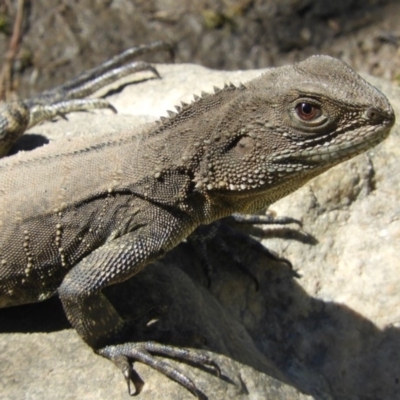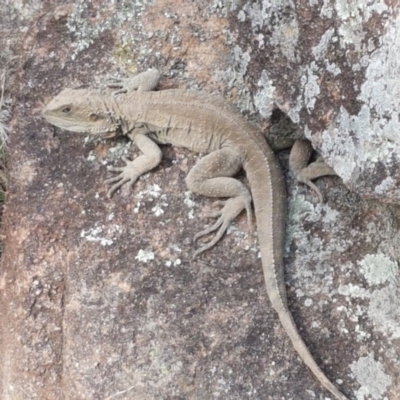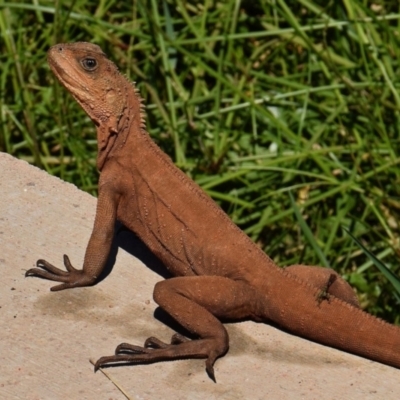Intellagama lesueurii (Australian Water Dragon)
The Australian Water Dragon (Intellagama lesueurii) is Australia's largest species of dragon with two distinct subspecies recognised, namely the Eastern Water Dragon (Intellagama l. lesueurii) and the Gippsland Water Dragon (Intellagama l. howittii). These two subspecies are readily distinguished from one another by distinct colour and pattern differences, although these are sometimes obscured by dirty or stained skin (e.g by iron oxide bacteria)*. For detailed descriptions of colours and patterns and how to tell the subspecies apart, see individual subspecies in the field guide.
To distinguish this species from other dragons in the region, there are a few unique features that can be used to differentiate them, even when their colours and patterns are obscured. Namely, they have scattered enlarged scales that tend to form transverse rows across the back, tail, hindlimbs and forearms (see image). These are slightly smaller in the subspecies Intellagama lesueurii howittii. The species also has a prominent dorsal crest, especially in the nuchal region (particularly pronounced in mature males) that continues onto the tail, where it divides into two low ridges distally. This unique latter feature (absent in all other dragon species in the region), combined with a laterally compressed body and tail (distal portion) are aquatic adaptations evolved to suit a riparian lifestyle, enabling them to swim proficiently through the water, both above and below the surface.
*If you're unsure what subspecies it is or the skin is dirty or stained, (as is sometimes the case) thus obscuring their distinctive colours and patterns, then Intellagama lesueurii is a safer option. See field guide image of Iron Oxide Bacteria-stained specimen.
Intellagama lesueurii is listed in the following regions:
Canberra & Southern Tablelands | Southern Highlands | South Coast | New South Wales North Coast | Greater Brisbane | Wide Bay | North Queensland
Species information
- Intellagama lesueurii Scientific name
- Australian Water Dragon Common name
- Not Sensitive
- Local native
- Non-invasive or negligible
- Up to 716m Recorded at altitude
- Machine learning


































